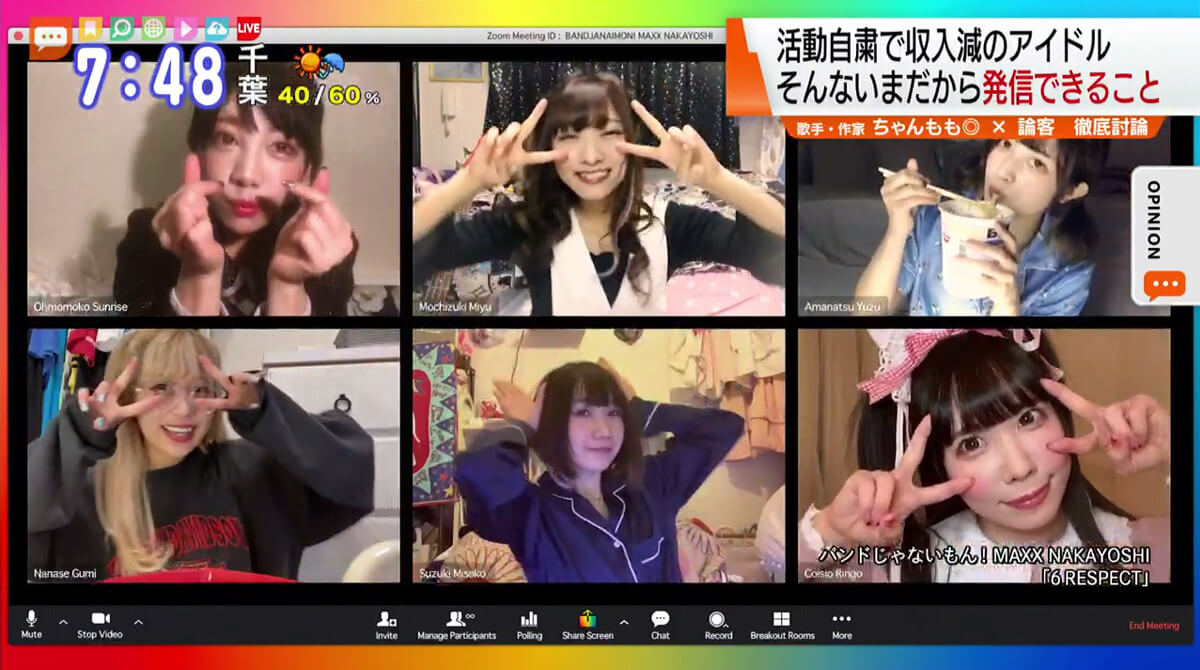Groups
Sakamichi Series: Nogizaka46 Sakurazaka46 Hinatazaka46
WACK Groups: BiSH
Japanese Idols News and Knowledge Base
Japanese Idols News and Knowledge Base

The COVID-19 pandemic has affected the entertainment industry in many ways, and the Japanese idol group scene is no exception. With their focus on live performances and fan interaction, Japanese idol groups have had to adapt to a new reality in which large gatherings and physical contact are discouraged. In this article, we will explore the impact of COVID-19 on Japanese idol group performances, and how they have responded to these challenges.
Japanese idol groups are known for their high-energy live performances, which often involve elaborate choreography, colorful costumes, and close interaction with fans. However, in the wake of the pandemic, many idol groups have had to cancel or postpone concerts, as well as limit their contact with fans. The Japanese government has issued guidelines recommending the cancellation or postponement of large events, and many venues have voluntarily suspended operations. As a result, many idol groups have had to cancel or reschedule their concerts, or shift to online performances.
One of the most notable changes has been the shift to online performances. Many idol groups have turned to livestreaming platforms like YouTube and Niconico to hold virtual concerts and meet-and-greets. This has allowed them to continue engaging with their fans and generating revenue, but it has also posed new challenges. Without the energy and excitement of a live audience, it can be difficult to maintain the same level of performance, and technical issues can arise. Nevertheless, many idol groups have embraced this new format and found ways to make it work.
Another challenge has been the restrictions on physical contact. Many idol groups have traditionally engaged in “high-touch” events, where fans can shake hands or high-five their favorite members. However, this kind of interaction is no longer possible in the current climate. Some idol groups have responded by creating new forms of fan engagement, such as virtual handshakes or personalized videos. Others have emphasized the importance of non-physical forms of communication, such as social media or online fan clubs.
The pandemic has also had an impact on the training and development of new idol group members. Traditionally, trainees undergo a rigorous training process, which includes vocal and dance lessons, as well as intensive physical training. However, with gyms and training facilities closed or restricted, it has become more difficult to maintain this level of training. Some idol groups have adapted by offering online training sessions, but this is not always a perfect solution.
Despite these challenges, Japanese idol groups have shown remarkable resilience in the face of the pandemic. Many have used the time to focus on creative projects, such as new music or videos, and to deepen their connections with fans. Some have even found new ways to reach international audiences, through virtual concerts and online fan clubs. As the world slowly recovers from the pandemic, it will be interesting to see how the Japanese idol group scene continues to evolve and adapt.
In conclusion, the COVID-19 pandemic has had a significant impact on Japanese idol group performances, forcing them to adapt to new forms of engagement and fan interaction. While these changes have been challenging, they have also sparked new creativity and innovation within the industry. As the world begins to emerge from the pandemic, it will be fascinating to see how Japanese idol groups continue to evolve and connect with fans around the world.